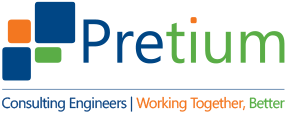A roofing system’s primary function is to protect the building from water infiltration and weather damage and to do this effectively for as long as possible. Increasing environmental challenges posed by climate change require roofs to be more efficiently designed, maintained and inspected.
Whether retrofitting an existing roof or designing new, various factors need to be considered such as the building’s use and anticipated lifespan, the roof’s function, local weather conditions and the client’s budget.
Roof system designs can provide optimized performance, but only if installed according to the specifications and manufacturers’ requirements.
As a roof system design philosophy, it is beneficial to install components that can remain in place for the majority of the building’s lifespan, says Jean-Guy Levaque (RRC, RRO), lead for Pretium Engineering’s Roof Consulting Team. “If you design to have proper components in place and your waterproofing membrane is replaced and recycled over the years—you can replace the waterproofing membrane above all other roof system components,” Levaque explains.
Roof Preventive Maintenance
The longevity of roof systems is directly impacted by the efforts in preventive maintenance. Repairing a roof on an “as-it-happens” basis is an ongoing approach by many buildings, but it’s not the most effective. By the time a leak is noticed, you’ve no choice but to react with emergency measures. When water seeps into the roofing materials, it can lead to rapid deterioration of the roof assembly or direct leaks into the building.
Different types of roofs have their own vulnerabilities and understanding them is crucial for effective maintenance. Adopting a proactive approach to roof maintenance is far more effective than reacting to issues as they arise. Investing in preventative maintenance not only saves money in the long run but also helps to extend the lifespan of the roof and maintain its integrity. Proactive maintenance prevents small problems from turning into major issues.
Roof Energy Performance
The thermal performance of a building is influenced by various factors including its design, size, and the materials used—particularly in the roof structure. In buildings with larger roof areas, the roof is possibly its most expensive component. Heat loss is a costly waste of valuable resources. It’s estimated that thermal bridging—weak points and gaps between layers of insulation—can reduce assembly performance by up to 30%. In a climate demanding robust thermal performance, paying attention to a building’s thermal properties is paramount.
If insulation is not tight in the roof assembly, there will be gaps in the insulation. Areas of heat loss are visible by using thermographic scanning tools. By modeling and analyzing thermal bridging of roof system components such as insulation fasteners, the thermal loss impact of gaps in the insulation can be realized and reacted to.

The type of materials and components installed can preserve not just the lifespan of the roof itself, but the lifespan of the building. As we see energy efficiency playing an expanding role in our yearly budgets, thermal performance levels of Canadian properties increasingly come under scrutiny. According to Canada’s Green Building Strategy, in the years counting down to 2050, the energy efficiencies (and deficiencies) will be public data, with the potential to greatly influence our real estate market.
If roof scans confirm that roof system components below the membrane are still performing, some salvaging strategies can be considered.
“For roofs installed 25 years ago, thermal performance standards and requirements for insulation are now outdated,” says Levaque. “But you may be able to remove the waterproof membrane, salvage the existing insulation, and add more insulation. As a result, you have less waste and environmental impact.” This insight underscores the importance of updating older roofs to meet modern thermal performance standards while minimizing waste and environmental impact.
Roof Retrofit Options
Adopting a proactive approach to long term performance of roofs starts with preventive maintenance and repairs. Addressing roof retrofits on a timely basis can help salvage roof system components. Updating older roofs with improved insulation while salvaging existing materials offers numerous benefits, including enhanced thermal performance, environmental sustainability, cost-effectiveness, regulatory compliance, and increased building value. This approach represents a win-win solution for building owners, occupants, and the environment alike.
Roof retrofits can potentially save between 5% and 15%+ of total energy consumption. Pretium listens to their clients’ needs to provide both short- and long-term solutions and assess roofing replacement strategies. Pretium can help your properties discover innovative and strategic solutions, create up to an 80% reduction in embodied carbon emissions, and achieve great savings.
Understanding the building materials used in your roof’s construction empowers you to make informed decisions about its maintenance and longevity. Pretium Engineering specializes in providing this understanding, enabling clients to take control of their roofing projects.

Pretium Engineering’s Roof Consulting Team, led by Jean-Guy Levaque (RRC, RRO), plays a vital role in optimizing the performance and longevity of roofing systems while minimizing risks and expenses for building owners and managers.
Whether it’s identifying opportunities for repair, retrofit, or replacement, Pretium Engineering’s expertise ensures that clients receive solutions tailored to their needs and budget constraints.
With expertise in various types of roofing systems, both steep and low slope, Pretium’s Roofing Technical Leadership Team is a highly skilled and experienced group. Being members of the International Institute of Building Enclosure Consultants (IIBEC) further emphasizes their commitment to excellence and industry best practices.
When it comes time to review your roof, consulting with Pretium Engineering can offer invaluable insights and recommendations tailored to your specific needs and circumstances. Whether you’re considering repairs, replacements, or proactive maintenance strategies, Pretium’s team can help you make informed decisions that protect your investment and maximize the value of your building assets.
Reach Pretium Engineering at info@pretiumengineering.com or call 905-333-6550.










